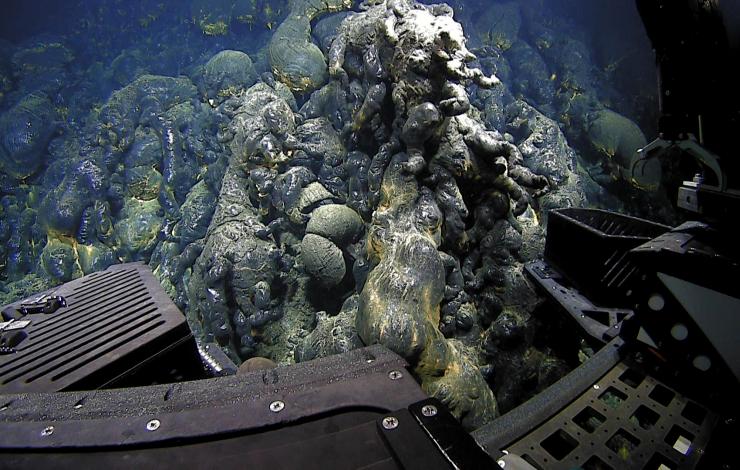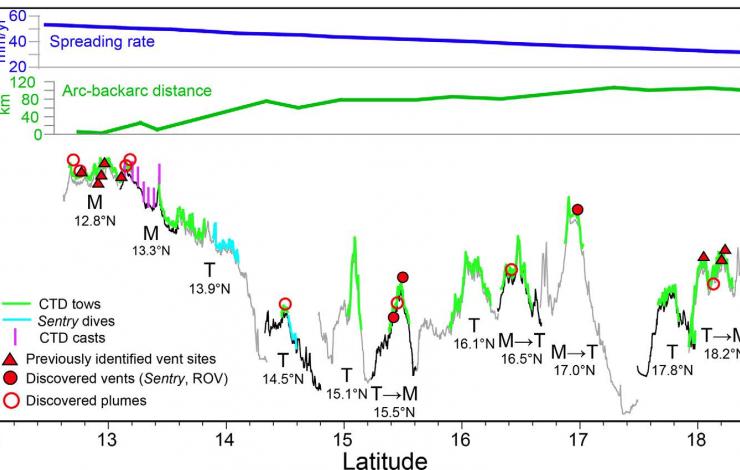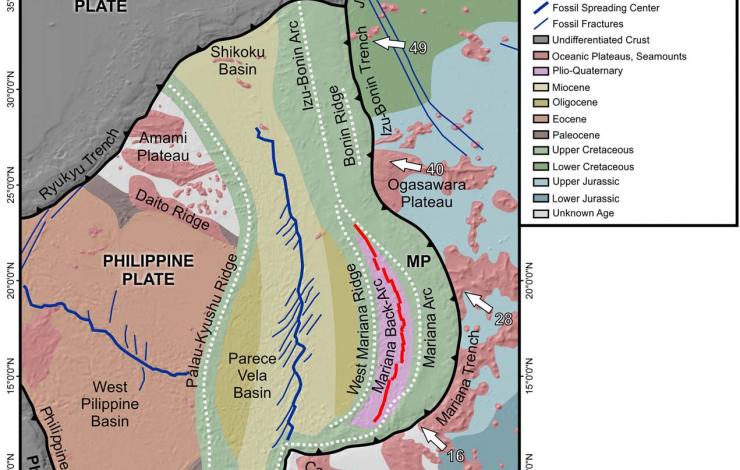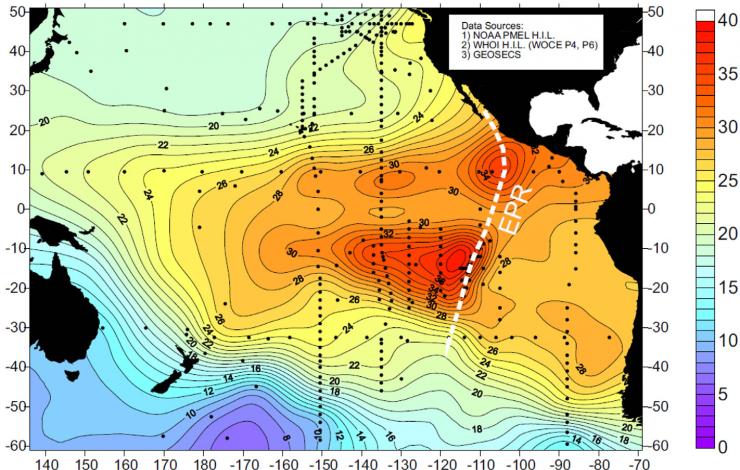Feature Publication Archive
Search all PMEL publications.
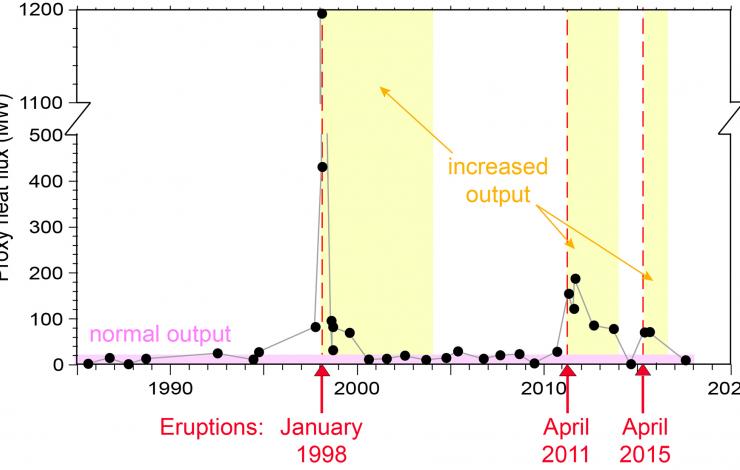
Estimates of hydrothermal heat flux (MW) for the 33-year time series (black dots; note break on the vertical axis). Pink band at bottom shows "normal" heat flux averaging ~15 MW. Yellow bands show intervals of increased heat flux following eruptions (red triangles and dashed lines), which reached values as high as 1200 MW. About two-thirds of the total heat flux occurred during the 10 years shown by the yellow bands.
About 80% of volcanic activity on Earth occurs on the deep seafloor of the global ocean. These eruptions are concentrated where the Earth’s tectonic plates collide or separate, accelerating the transfer of heat, chemicals, and microbes from the crust to the ocean through hydrothermal venting (the discharge of high-temperature fluids heated within the Earth’s crust) from the seafloor. A primary obstacle to the advancement of our knowledge of submarine eruptions is that most are undetected by conventional monitoring methods.
In 2015, the National Science Foundation’s Ocean... more »
Results of the research documenting a recent volcanic eruption on the Mariana back-arc, 4500 meters deep, (making it the deepest known eruption on Earth) were published this week in a special issue of Frontiers in Earth Science (23 October 2018 | https://doi.org/10.3389/feart.2018.00172). It was first discovered in December of 2015 with cameras aboard an autonomous underwater vehicle, Sentry, by researchers searching for new hydrothermal vents.... more »
Baker, E.T., S.L. Walker, J.A. Resing, W.W. Chadwick, Jr., S.G. Merle, M.O. Anderson, D.A. Butterfield, N.J. Buck, and S. Michael
Geochem. Geophys. Geosyst., 18(11), 4211–4228, doi: 10.1002/2017GC007234 (2017)
Back-arc spreading centers (BASCs) form a distinct class of ocean spreading ridges distinguished by steep along-axis gradients in spreading rate and by additional magma supplied through subduction. These characteristics can affect the population and distribution of hydrothermal activity... more »
Anderson, M.O., W.W. Chadwick, Jr., M.D. Hannington, S.G. Merle, J.A. Resing, E.T. Baker, D.A. Butterfield, S.L. Walker, and N. Augustin
Geochem. Geophys. Geosyst., 18(6), 2240–2274, doi: 10.1002/2017GC006813 (2017)
The relationships between tectonic processes, magmatism, and hydrothermal venting along
600 km of the slow-spreading Mariana back-arc between 12.78N and 18.38N reveal a number of similarities
and differences compared to slow-spreading mid-ocean ridges... more »
Lupton, J.E., and W.J. Jenkins
Geochem. Geophys. Geosyst., 18(5), 1810–1823, doi: 10.1002/2017GC006848 (2017)
The recent GEOTRACES Eastern Pacific Zonal Transect in 2013 crossed the East Pacific Rise at 15°S following the same track as the 1987 Helios Expedition along the core of the mid-depth helium plume that spreads westward from the East Pacific Rise (EPR) axis. The fact that several stations were co-located with the earlier Helios stations has... more »



